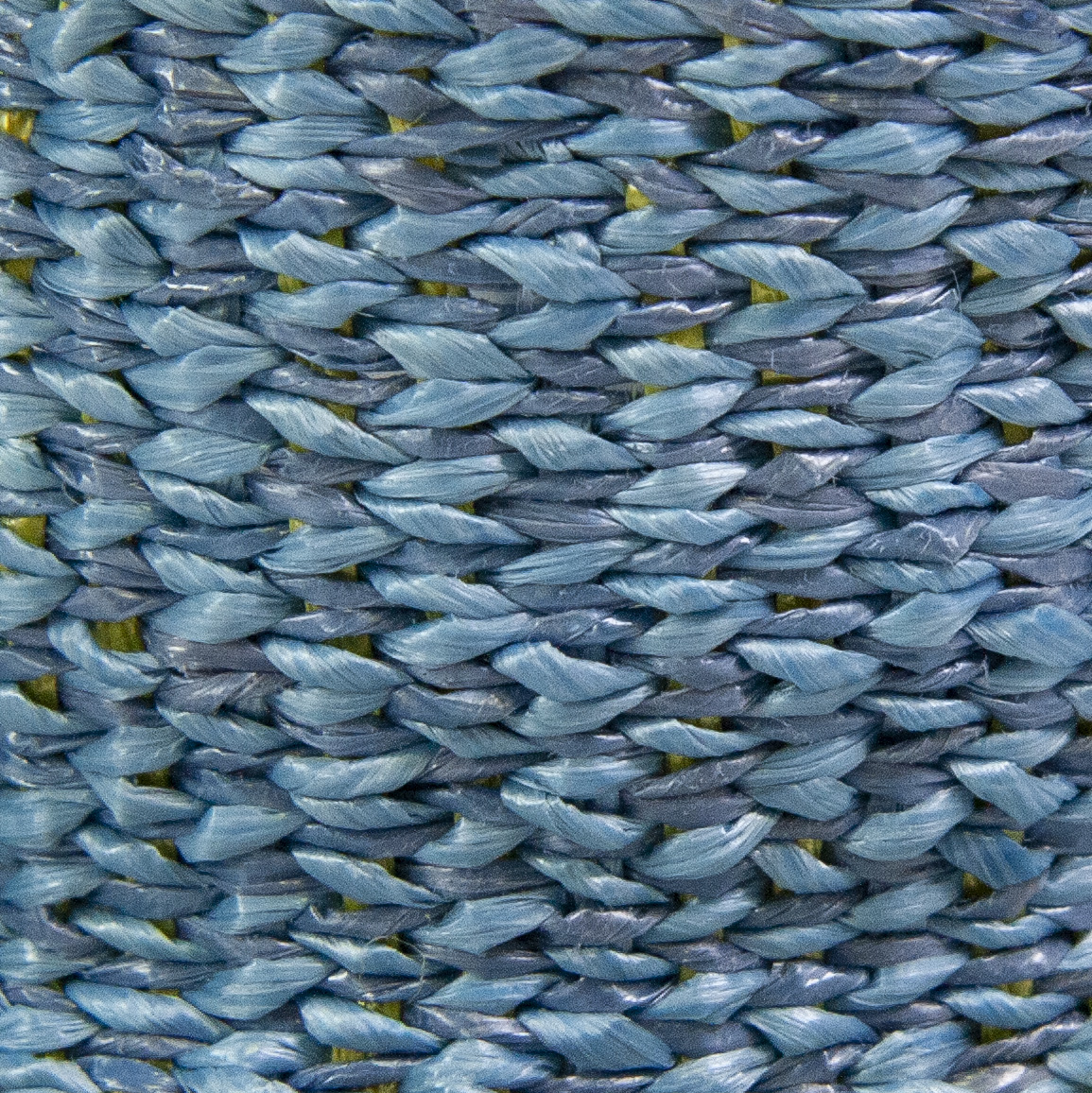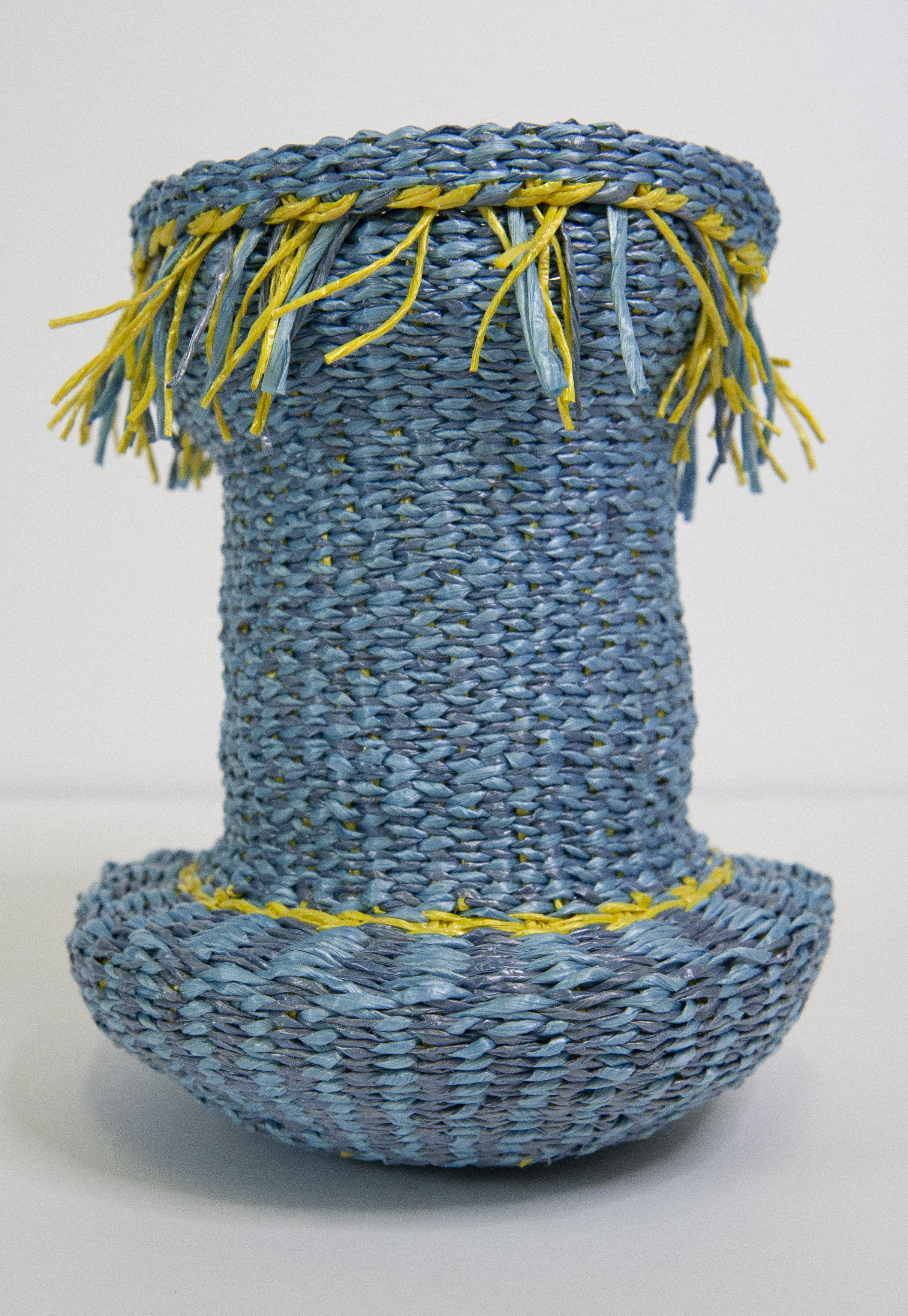Katherine Behar
Do Baskets Contain Computation’s Counterhistory?
During the pandemic I took up basketry. I failed to learn how to make excellent baskets, but I was surprised to find a throwaway line in a basketry how-to book. It claimed that basketry is the one mass-produced process that has remained immune to mechanical automation.(1)
This itself is staggering (and dismaying). Every basket that wastes away in Walgreens after Easter, that clutters IKEA interiors, that chokes dollar store dust bunnies—all of these containership-loads (that is, shitloads) of baskets are made by hand. My tangled basket-making attempts offer a perspective as to why. The key to basketry, I found, isn’t about patterns; it’s about dexterity. Patterns are easy, but the nuances of dexterous embodied knowledge are extraordinarily difficult processes to offload onto machines.
Nevertheless, the notion that basketry somehow resists automation flies in the face of most histories of automation, which track a steady absorption of fiber arts and craft traditions. Weaving in particular figures strongly in this topos, connecting the histories of automation, mass production, and computation. With power looms and the automation of weaving and spinning, mass production in textile mills stoked the Industrial Revolution from Manchester, England to Lowell, Massachusetts in the late 18th and early 19th centuries. Automatic weaving technology also appeared at a key juncture in the history of computation in the late 19th century, when Jacquard loom punch cards inspired Herman Hollerith’s punch card system. This critical innovation in mechanized binary information storage and retrieval paved the way for modern computers, and formed the basis of Hollerith’s ravishingly successful company, which in the early 20th century would be renamed IBM. Beyond weaving, the first knitting machine—called a knitting frame—predates the Industrial Revolution by two centuries. Knitting frames were alongside the mechanized looms smashed by revolting Luddites in the late 18th century. Contemporary knitting machines and specialized machines for machine embroidery have been churning out everything from T-shirts, to monograms, to monogrammed T-shirts for many decades.
Textile production is among the material practices through which women and people of color have traditionally manipulated pliable elements into elaborate fiber art forms. Accordingly, beyond this technical history, scholars as varied as Sadie Plant and Lisa Nakamura have discussed social histories of computation. Their work, alongside that of many others, makes visible the gendered and racialized cultural compatibility that makes a fit of women, people of color, and computation.(2)
I myself felt this fit. I first learned to sew from my mother, Linda Liu Behar, an accomplished fiber artist. Later, as a young art student, I gained an appreciation for the geometric gestures that can formally manipulate pliable materials. Through the repetitive patterns of knitting, crocheting, and weaving, I could make one-dimensional linear elements like yarn and thread into two-dimensional planar fabric, and by seaming I could turn two-dimensional planar fabric into three-dimensional structured forms. I felt an affinity for fiber.
But my horribly convoluted baskets suggest otherwise. In basketry, I was unable to control tension or gather momentum and I struggled to bend resistive materials without sacrificing pattern and shape. I’m a beginner at basketry—this oldest of the fiber arts—and I’m sure this is at least in part a matter of practice. Yet my ego lures me into attributing some significance to my poor craftsmanship. Basketry’s resistance to automation is matched by its resistance to me.
And this resistance provides an insight: if a weaving-based history of technology tells of the ready subsumption of women’s and people of color’s work into computation, basketry surfaces a counterhistory of computational labor. In the gendered media history of computation as an outgrowth of women’s work, computation is understood as bits and bytes. The delicate complexity of women’s work suggested by the “nimble fingers” motif of petite women of color assembling electronics suggests by way of analogy that this work itself is docile and amenable to automation’s conquest. But the counterhistory contained in baskets tells another story, revealing computationality to be founded not on easy or willing takeover, but instead on a painfully exploitative, extractive labor paradigm. Basketry, too, is traditionally women’s work. But this work is the exact opposite of anything easy to automate. It cannot be reduced to bits and bytes. Instead, real people mass produce baskets by hand at below subsistence wages. In place of nimble fingers, their bleeding fingers are a brutal reminder that automation only accelerates exploitation. Computation merely mimics forms of labor that are at their core irreducibly extractive. Meanwhile, the real people who make baskets are forced to mimic computerized output by doing exactly what computers can’t.
---
1. Whether this is apocryphal I cannot say, but it’s led me to these thoughts. See Stella Harding and Shane Waltener, Practical Basketry Techniques (New York: Herbert Press, 2012) 8.
2. See, for example, Sadie Plant, Zeros + Ones: Digital Women and the New Technoculture (London: Fourth Estate, 1997) and Lisa Nakamura, “Indigenous Circuits: Navajo Women and the Racialization of Early Electronic Manufacture,” American Quarterly 66, no. 4 (December 2014): 919-941.
